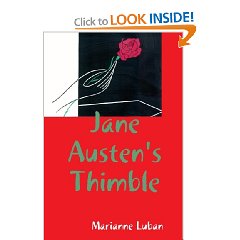
I suggested, some years ago on my now defunct website [some of it still exists at Reocities.com] the possibility, that the mummy "Thutmose I" may be a son of Amenhotep I-- Prince Sipair. At least that is what Scott Woodward, the first microbiologist to do a genetic study of the royal mummies seemed to think, that they were father and son, although his findings were never published. The erstwhile "Thutmose I" does not have his arms positioned across his chest like a pharaoh, but his now missing hands were once placed over his genitals in a pose that has been seen in royal princes. Yet, even in remote antiquity, there was some confusion as to whether Sipair was a prince or an actual king. In the tomb of Inherkhauy, Sipair is included in the famous tableau called "The Lords of the West". There he sits at the end of the first row without a cartouche, but holding royal insignia, the crook and the flail, regardless. A ceremonial beard is tied on his chin, although he sports only the princely sidelock.
Sipair was reburied by Butehamun, a scribe in charge of dismantling the Theban necropolis, whose sovereign instructed him to strip the "ancestors" of their wealth for his own profit at the end of the 20th Dynasty. On Butehamun's coffin, in the Turin Museum, Prince Sipair is there among the royals depicted that Butehamun "restored" and he is shown as an adult, as he is on other artifacts. The pAbbot, however, refers to the burial of a "king" Ahmose-Sipair [his full name in a cartouche] but supplies no prenomen for him. His tomb, wherever it was, was reported in the papyus as being "sound" i. e. "unplundered" in the reign of Ramesses IX. The other royals depicted on Butehamun's coffin are Amenhotep I, Queen Ah-hotep, Queen Ahmose-Nefertari, Queen Sitamun and Queen Meryetamun--all of their mummies "supposedly" discovered in the Deir el Bahari cache. So we may suppose that Prince Sipair was there with the other members of his family. Queen Ah-hotep was a relative of Amenhotep I, (possibly even his chief wife) Ahmose-Nefertari was his mother, and Sitamun and Meryetamun apparently sister-wives of the pharaoh. There is one such Meryetamun, her tomb [a reburial] discovered beneath a part of Hatshepsut's mortuary temple, who bears quite a resemblance to the now nameless male mummy, including their very thick, brush-like eyelashes and prominent over-bites.
As we now know, Amenhotep I did not seem to have had a surviving son and was succeeded by Thutmose I, whose father is an unknown. It may have been that Prince Ahmose-Sipair was the heir-apparent at one time, even assumed some kingly duties for some reason, but met an untimely death.
Recent scanning of the corpse has revealed that he met a violent end, perhaps even in battle, as what seems to be an arrow-head is still imbedded in his chest. The mummy was discovered in a coffin of the actual Thutmose I but which was altered for Pinudjem I. Why that was still poses many questions. On the other hand, as the latest DNA report for the person in question has not yet been released, the mummy could possibly be one of the sons of Thutmose I, as the features correspond closely to those of other persons within the Thutmosid dynasty.







